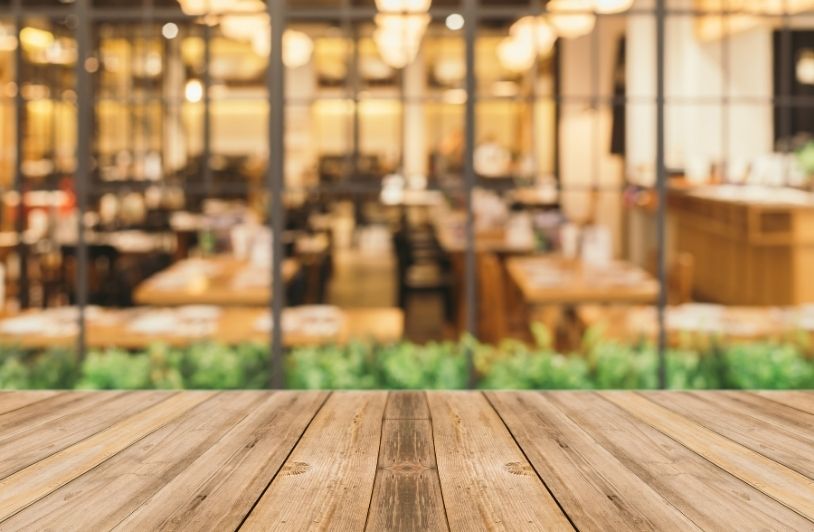Every restaurant interior tells a story, and sometimes that story begins not with décor, but with economics. The design choices guests experience, the thickness of a table top, the finish on its edge, and the materials that catch the light all reflect a balance between budget, brand, and the broader economic situation in the world.
In times of financial growth, restaurants lean toward statement pieces: marble restaurant tables, sculptural bases, and custom designs that speak of abundance and confidence. During periods of tighter spending, the focus turns to versatility and durability, laminate tops that mimic luxury, steel frames that outlast trends, and modular layouts that can shift with demand.
Each choice, visible or not, becomes an indicator of how the industry adapts to changing conditions. Restaurant tables, often overlooked by diners, are quiet storytellers of both creative ambition and economic reality.
Material Choices in a Changing Market
As supply chains evolve and material costs fluctuate because of the economy, designers have become increasingly resourceful. The shift toward sustainable and cost-effective materials is not just an environmental move, but an economic one. Solid wood remains prized for its authenticity, yet many operators now favor engineered wood or composite surfaces that maintain beauty at a lower cost.
These choices serve multiple goals: visual appeal, resilience, and financial efficiency. A table must perform daily under constant use, but it also needs to align with brand values. For instance, a high-end bistro may choose reclaimed oak to reflect environmental responsibility, while a fast-casual chain might select durable laminate to ensure affordability and easy replacement.
Each surface material now carries meaning beyond aesthetics; it represents strategy.
Design as a Measure of Confidence
The look of restaurant furniture often mirrors the market mood. After downturns, minimalist designs with honest materials gain popularity, reflecting caution and simplicity. When economies recover, we see the return of bold geometry, glossy finishes, and generous spacing that signal optimism.
Designers recognize this pattern and use it intentionally. A table that feels generous in proportion communicates abundance. A smaller, efficient layout suggests prudence and adaptability. These unspoken messages shape how customers interpret a restaurant’s story before they even read the menu.
Balancing Beauty and Budget
The smartest restaurant designs manage to express personality without overspending. Owners are increasingly investing in furniture that looks premium but offers flexibility and longevity.
The most successful approaches include:
- Mixing materials: pairing affordable steel bases with high-quality table tops.
- Choosing versatile shapes: square and rectangular tops that can be combined for events or reconfigured easily.
- Investing in timeless finishes: neutral tones and subtle grains that remain relevant for years.
- Opting for quality craftsmanship: furniture that endures heavy use and still represents the brand well.
This mix of creativity and caution defines today’s design language, elegant but efficient, expressive but grounded.
Local Craft, Global Supply
Changes in the economy have also changed how and where furniture is created. Global sourcing is still useful for keeping costs down, but problems with the supply chain have made people want to go back to local craftsmanship. More and more, restaurants are working with local makers to make tables that fit their space and tell their story.
Making things locally not only cuts down on delays, but it also makes them more real. A handmade table built from wood that grows in the area has a sense of place and tells a story. It ties the restaurant’s identity to the neighborhood and helps small businesses in the process.
Sustainability as an Economic Advantage
Eco-conscious design once came at a premium, but it is now a long-term investment that often saves money. Durable, renewable materials reduce replacement costs, while efficient manufacturing minimizes waste. Customers are also more likely to support restaurants that demonstrate environmental integrity, which translates into both loyalty and reputation.
In this sense, sustainability and economy no longer compete; they complement each other. A recycled composite table or a locally sourced bamboo top can be both cost-effective and brand-enhancing.
Flexibility in Times of Change
Adaptability has become the most valuable design principle of the decade. Restaurants now prioritize tables that can move easily, connect for larger groups, or fold for storage during off-peak hours. This flexibility helps businesses respond to unpredictable demand and evolving service models such as delivery, outdoor dining, and hybrid layouts.
Every detail counts. Adjustable bases, stackable surfaces, and weather-resistant coatings all extend usability across seasons and concepts. Furniture is no longer a static expense; it is a dynamic asset.
A Future Built on Balance
Every table at a restaurant has a quiet memory of its period. Its materials, dimensions, and finishes tell a story of how design changes with the times and the needs of the market. What looks like a simple surface for eating can frequently tell a much bigger story about strength, creativity, and who you are.
As the economy changes, restaurants still have to find a balance between being creative and practical, beautiful and long-lasting, and ambitious and efficient. The table is still the most important part of that story since it links design choices to problems in the actual world. It tells us that even when things are uncertain, good craftsmanship and being cognizant of the economy can work well together. Each table, polished and useful, shows that design is not just about what we see. It’s also about how an industry lives, changes, and tells its narrative one surface at a time.
CLICK HERE TO DONATE IN SUPPORT OF OUR NONPROFIT COVERAGE OF ARTS AND CULTURE




